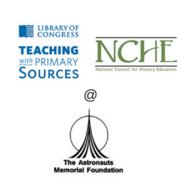How relevant are our ties with Russia and the space program?
(View Complete Item Description)Given the current political arena, design a timeline of the Russian involvement with the space program and list any current involvement you can find. Describe, using documents from the 1950s and 1960s by, why it may be important to keep the Russians involved/univolved or what issues you believe may be incurred by private industry and the money spent by the Russians. By providing money for private industry who are working with NASA, how much leeway do the Soviets have within the confines of national security?
Material Type: Lesson Plan




















